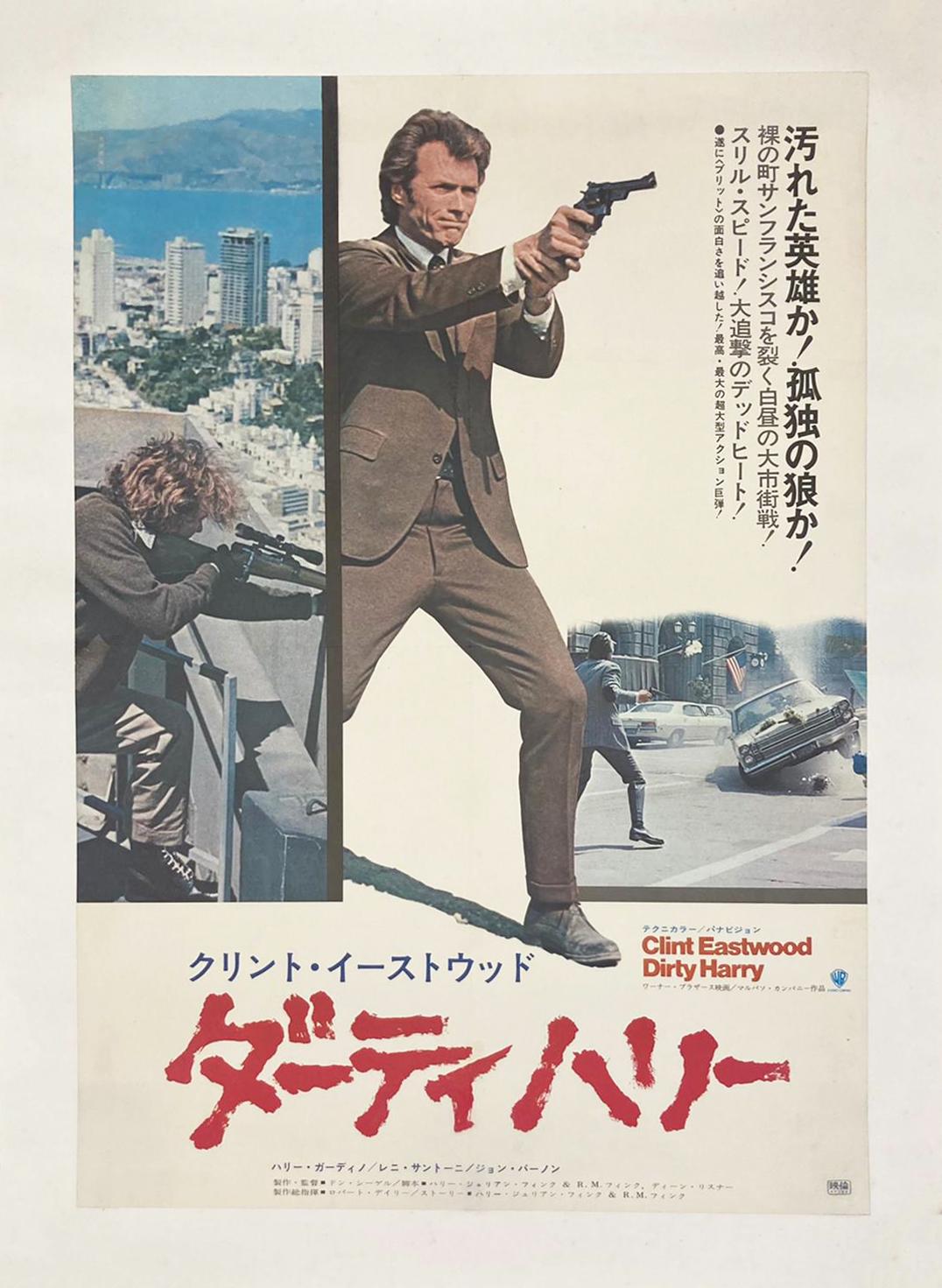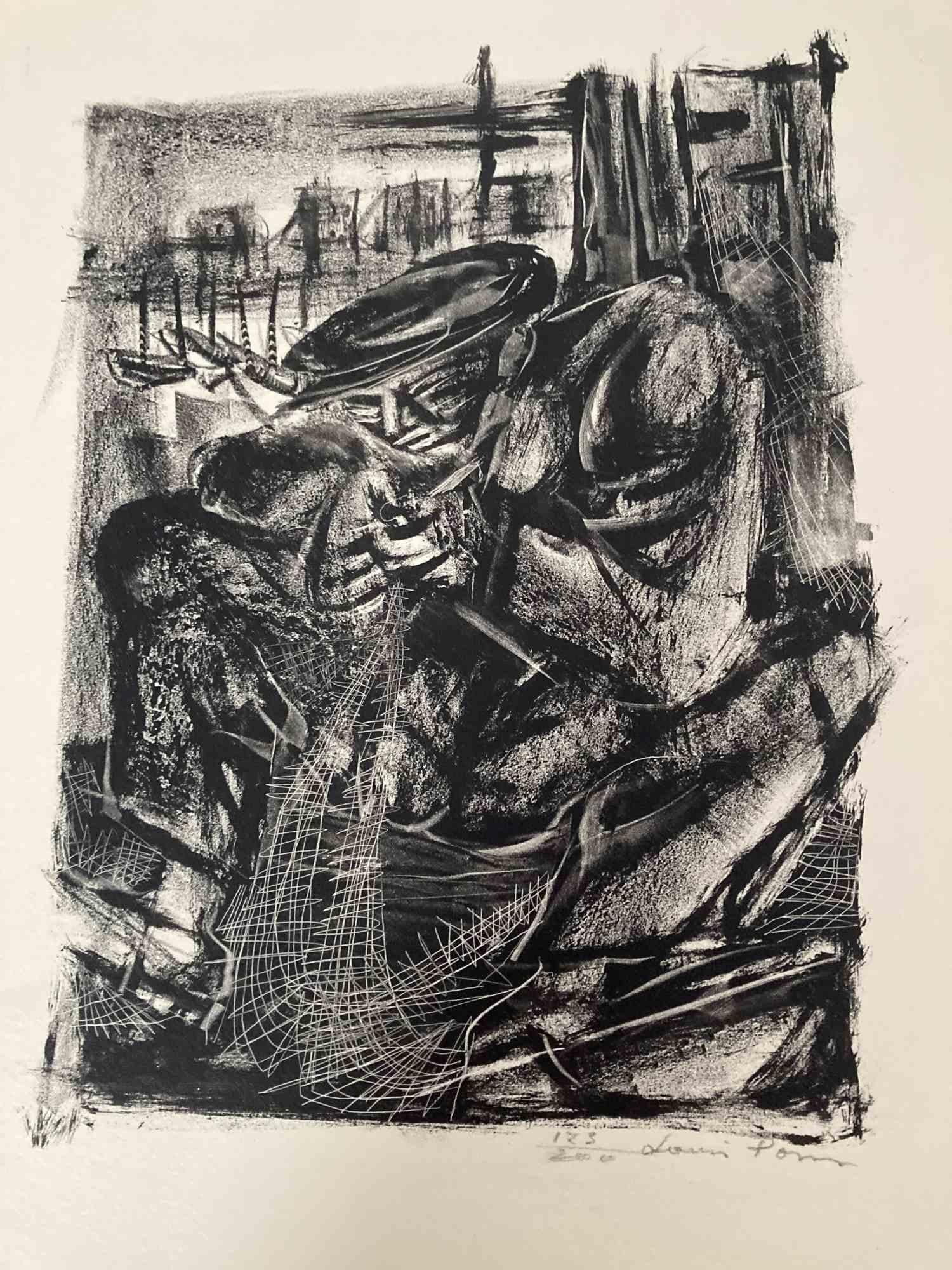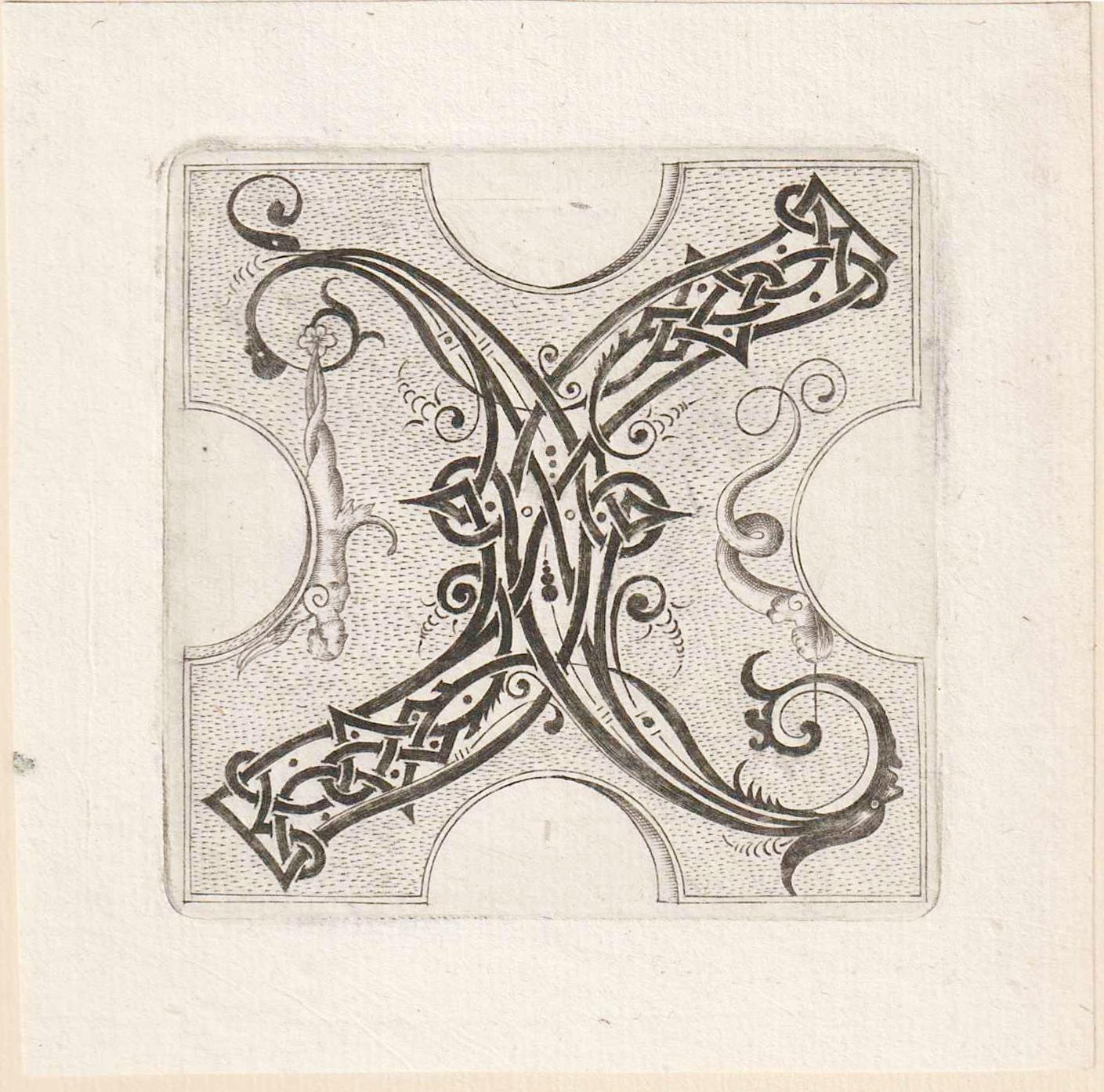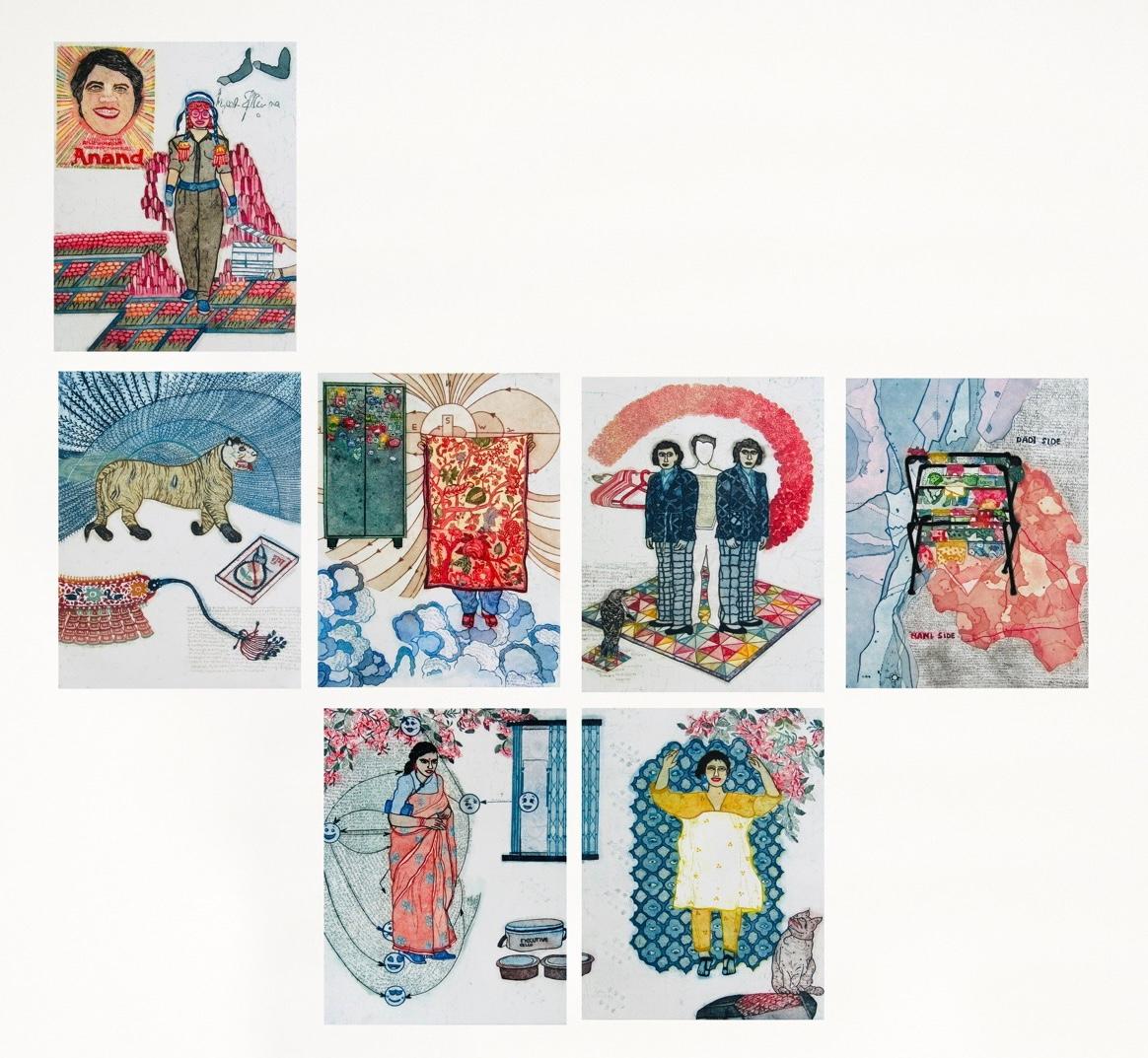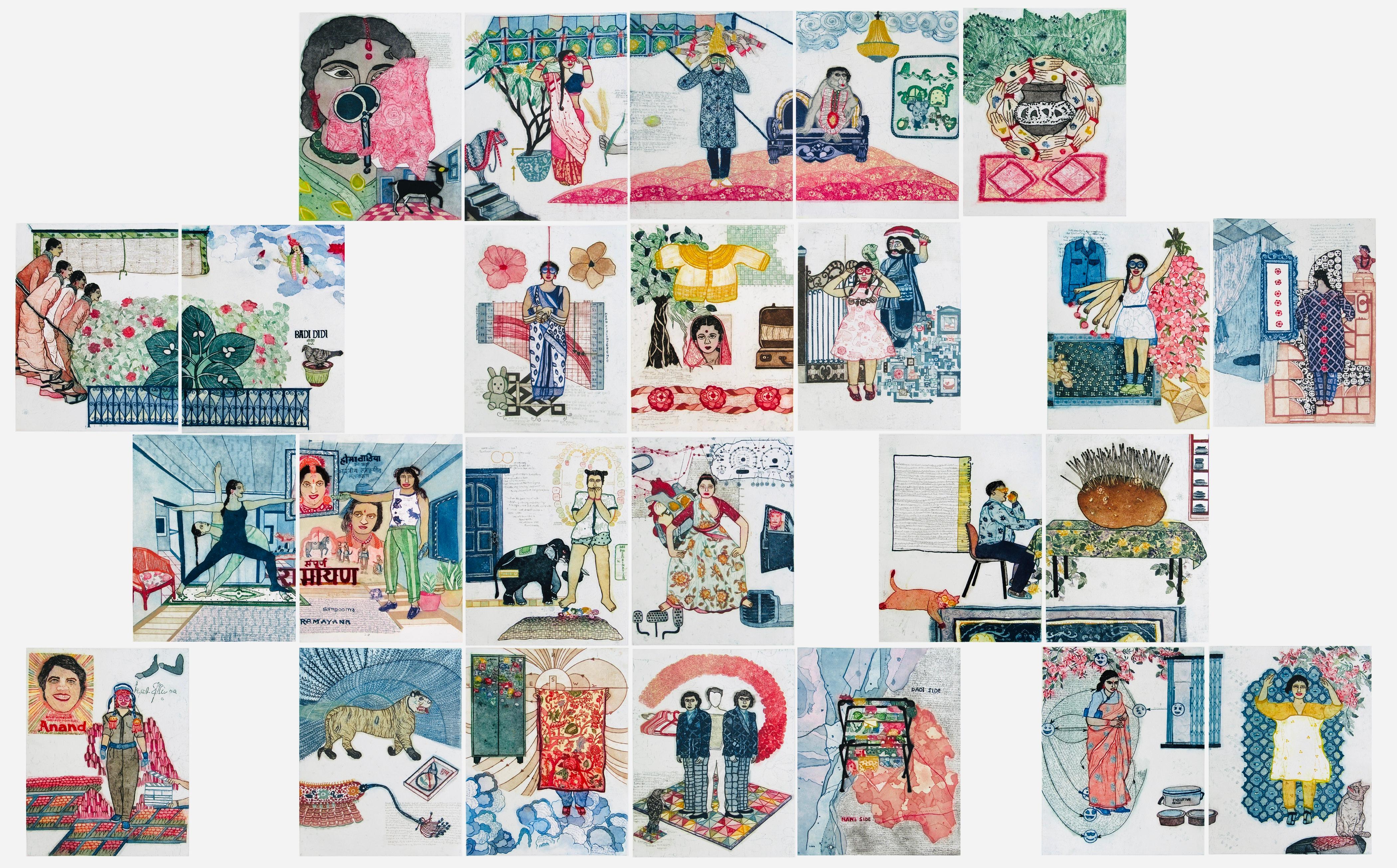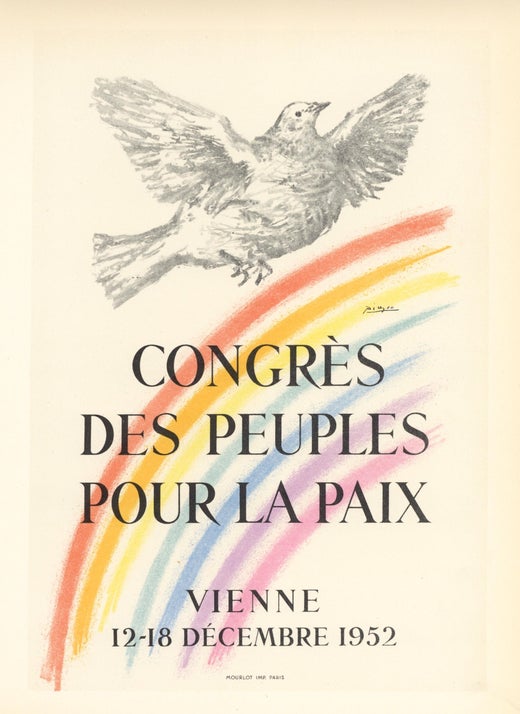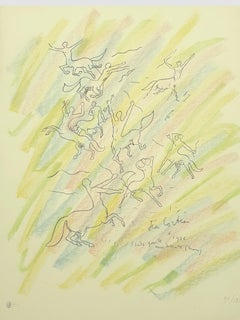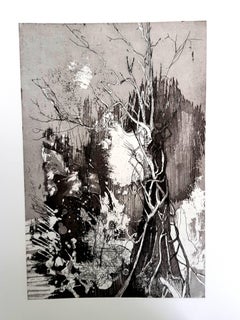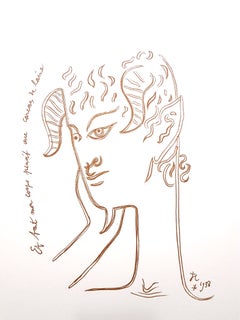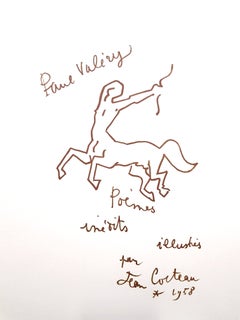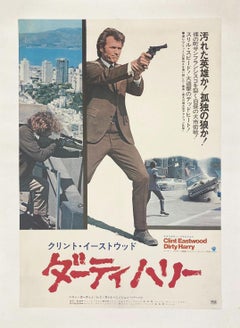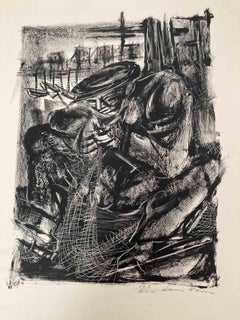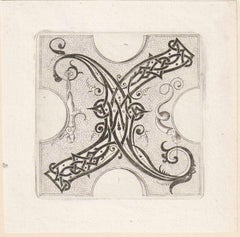Items Similar to Pablo Picasso (after) Helene Chez Archimede - Wood Engraving
Want more images or videos?
Request additional images or videos from the seller
1 of 10
(after) Pablo PicassoPablo Picasso (after) Helene Chez Archimede - Wood Engraving1955
1955
About the Item
Pablo Picasso (after)
Helene Chez Archimede
Medium: engraved on wood by Georges Aubert
Dimensions: 44 x 33 cm
Portfolio: Helen Chez Archimede
Year: 1955
Edition: 240 (Here it is one of the140 reserved for the members of the New Paris Circle of the book and its collaborators (No. 58, printed for Alexandre Loewy)
Pablo Picasso
Picasso is not just a man and his work. Picasso is always a legend, indeed almost a myth. In the public view he has long since been the personification of genius in modern art. Picasso is an idol, one of those rare creatures who act as crucibles in which the diverse and often chaotic phenomena of culture are focussed, who seem to body forth the artistic life of their age in one person. The same thing happens in politics, science, sport. And it happens in art.
Early life
Born in Malaga, Spain, in October of 1881, he was the first child born in the family. His father worked as an artist, and was also a professor at the school of fine arts; he also worked as a curator for the museum in Malaga. Pablo Picasso studied under his father for one year, then went to the Academy of Arts for one year, prior to moving to Paris. In 1901 he went to Paris, which he found as the ideal place to practice new styles, and experiment with a variety of art forms. It was during these initial visits, which he began his work in surrealism and cubism style, which he was the founder of, and created many distinct pieces which were influenced by these art forms.
Updates in style
During his stay in Paris, Pablo Picasso was constantly updating his style; he did work from the blue period, the rose period, African influenced style, to cubism, surrealism, and realism. Not only did he master these styles, he was a pioneer in each of these movements, and influenced the styles to follow throughout the 20th century, from the initial works he created. In addition to the styles he introduced to the art world, he also worked through the many different styles which appeared, while working in Paris. Not only did he continually improve his style, and the works he created, he is well known because of the fact that he had the ability to create in any style which was prominent during the time.
Russian ballet
In 1917, Pablo Picasso joined the Russian Ballet, which toured in Rome; during this time he met Olga Khoklova, who was a ballerina; the couple eventually wed in 1918, upon returning to Paris. The couple eventually separated in 1935; Olga came from nobility, and an upper class lifestyle, while Pablo Picasso led a bohemian lifestyle, which conflicted. Although the couple separated, they remained officially married, until Olga's death, in 1954. In addition to works he created of Olga, many of his later pieces also took a centralized focus on his two other love interests, Marie Theresa Walter and Dora Maar. Pablo Picasso remarried Jacqueline Roque in 1961; the couple remained married until his death 12 years later, in 1973.
Work as a pacifist
Pablo Picasso was a pacifist, and large scale paintings he created, showcased this cry for peace, and change during the time. A 1937 piece he created, after the German bombing of Guernica, was one such influential piece of the time. Not only did this become his most famous piece of art work, but the piece which showed the brutality of war, and death, also made him a prominent political figure of the time. To sell his work, and the message he believed in, art, politics, and eccentricity, were among his main selling points.
Conflicting with social views
Many things Pablo Picasso did during the 1950s, conflicted with the general public. Viciousness towards his children, exaggerated virility towards women, and joining the Communist party, were some of the many scandals which he was involved in during his lifetime. Although most of the things he did were viewed negatively by a minority of the general public, admirers of Pablo Picasso turned a blind eye, and still accepted him as a prominent figure in their society. Following the end of WWII, Pablo Picasso turned back towards his classic style of work, and he created the "Dove of Peace." Even though he became a member of the Communist party, and supported Stalin and his political views and rule, Pablo Picasso could do no wrong. In the eyes of his admirers and supporters, he was still a prominent figure, and one which they would follow, regardless of what wrongs he did. He was not only an influence because of the works he created, but he was also an influential figure in the political realm.
Influence outside of art
Although Pablo Picasso is mainly known for his influence to the art world, he was an extremely prominent figure during his time, and to the 20th century in general. He spread his influences to the art world, but also to many aspects of the cultural realm of life as well. He played several roles in film, where he always portrayed himself; he also followed a bohemian lifestyle, and seemed to take liberties as he chose, even during the later stages of his life. He even died in style, while hosting a dinner party in his home.
Collection of work
Pablo Picasso is recognized as the world's most prolific painter. His career spanned over a 78 year period, in which he created: 13,500 paintings, 100,000 prints and engravings, and 34,000 illustrations which were used in books. He also produced 300 sculptures and ceramic pieces during this expansive career. It is also estimated that over 350 pieces which he created during his career, have been stolen; this is a figure that is far higher than any other artist throughout history.
Sale of his works
Pablo Picasso has also sold more pieces, and his works have brought in higher profit margins, than any other artist of his time. His pieces rank among the most expensive art works to be created; with a price tag of $104 million, Garson a la Pipe, was sold in 2004.
Although he had a conflicting lifestyle, Pablo Picasso was admired by many, and was one of the most influential figures of his time. Not only during his life, but also after his death, he is still one of the most well known artists, and political figures, of his time. With thousands of pieces to his name, and art works which have been seen by millions, around the world, he has been a great influence to society, he has influenced the art world, and he introduced many new styles of art, which helped shape modern art, and modern styles artists follow today.
- Creator:(after) Pablo Picasso (1881 - 1973, Spanish)
- Creation Year:1955
- Dimensions:Height: 17.33 in (44 cm)Width: 13 in (33 cm)Depth: 0.04 in (1 mm)
- Medium:
- Movement & Style:
- Period:
- Condition:
- Gallery Location:Collonge Bellerive, Geneve, CH
- Reference Number:1stDibs: LU16121879333
(after) Pablo Picasso
Pablo Picasso (1881 – 1973) was a Spanish painter, sculptor, printmaker, ceramicist, stage designer, poet and playwright who is regarded as one of the most influential artists of the 20th century. He is known for co-founding the Cubist movement, the invention of constructed sculpture, the co-invention of collage, and for the wide variety of styles that he helped develop and explore. Exceptionally prolific throughout the course of his long life, Picasso achieved universal renown and immense fortune for his revolutionary artistic accomplishments, and became one of the best-known figures in 20th-century art. The total number of artworks he produced has been estimated at around 50,000.
About the Seller
4.9
Platinum Seller
Premium sellers with a 4.7+ rating and 24-hour response times
Established in 2015
1stDibs seller since 2015
952 sales on 1stDibs
Typical response time: <1 hour
- ShippingRetrieving quote...Shipping from: Collonge Bellerive, Geneve, Switzerland
- Return Policy
Authenticity Guarantee
In the unlikely event there’s an issue with an item’s authenticity, contact us within 1 year for a full refund. DetailsMoney-Back Guarantee
If your item is not as described, is damaged in transit, or does not arrive, contact us within 7 days for a full refund. Details24-Hour Cancellation
You have a 24-hour grace period in which to reconsider your purchase, with no questions asked.Vetted Professional Sellers
Our world-class sellers must adhere to strict standards for service and quality, maintaining the integrity of our listings.Price-Match Guarantee
If you find that a seller listed the same item for a lower price elsewhere, we’ll match it.Trusted Global Delivery
Our best-in-class carrier network provides specialized shipping options worldwide, including custom delivery.More From This Seller
View AllJean Cocteau - Study for the Wall - Original Handsigned Lithograph
By Jean Cocteau
Located in Collonge Bellerive, Geneve, CH
Jean Cocteau - Study for the Wall - Original Handsigned Lithograph
Signed in pencil and numbered
Dimensions: 65 x 50 cm
Edition: 150
1956
Category
1950s Modern More Prints
Materials
Lithograph
Jean Jansem - Original Etching
By Jean Jansem
Located in Collonge Bellerive, Geneve, CH
Jean Jansem - Original Etching
Title: Loneliness
Dimensions: 40 x 30 cm
Edition of 175
Paper: vélin de Rives
1974
Jean Jansem was born in 1920 at Seuleuze in Asia Minor and spent h...
Category
1970s Modern Figurative Prints
Materials
Etching
$348 Sale Price
40% Off
Jean Cocteau - Reflections - Original Lithograph
By Jean Cocteau
Located in Collonge Bellerive, Geneve, CH
Original Lithograph by Jean Cocteau
Title: Reflections
Signed in the plate
Dimensions: 32 x 25.5 cm
Edition: 200
1959
Publisher: Bibliophiles Du Palais
Unnumbered as issued
Category
1950s Modern More Prints
Materials
Lithograph
Jean Cocteau - For Paul Valery - Original Lithograph
By Jean Cocteau
Located in Collonge Bellerive, Geneve, CH
Original Lithograph by Jean Cocteau
Title: Paul Valery Poems
Signed in the plate
Dimensions: 32 x 25.5 cm
Edition: 200
1959
Publisher: Bibliophiles Du Palais
Unnumbered as issued
Category
1950s Modern More Prints
Materials
Lithograph
Antoni Clavé - Original Lithograph - For Pushkin's Queen of Spades
By Antoni Clavé
Located in Collonge Bellerive, Geneve, CH
Antoni Clavé - Original Lithograph - For Alexander Pushkin's Queen of Spades
Dimensions: 325 x 247 mm.
1946
Original lithograph of Antoni Clavé
Edit...
Category
1940s Modern Figurative Prints
Materials
Lithograph
$488 Sale Price
30% Off
Jean Cocteau - Bulls - Original Lithograph
By Jean Cocteau
Located in Collonge Bellerive, Geneve, CH
Original Lithograph by Jean Cocteau
Title: Taureaux
Signed in the plate
Dimensions: 40 x 30 cm
Edition: 200
Luxury print edition from the portfolio of Trinckvel
1965
Jean Cocteau
W...
Category
1960s Modern More Prints
Materials
Lithograph
You May Also Like
Clint Eastwood Dirty Harry Original Vintage B2 Japanese Poster 1971
Located in London, GB
DIRTY HARRY (1971)
Vintage poster created for the first Japanese release of the Don SIEGEL directed thriller starring Clint EASTWOOD
* Format: B2: 20×28 inches (51×73 cm)
* Condit...
Category
1970s Modern Figurative Prints
Materials
Archival Paper
Clint Eastwood Dirty Harry Original Vintage B2 Japanese Poster 1971
Located in London, GB
DIRTY HARRY (1971)
Vintage poster created for the first Japanese release of the Don SIEGEL directed thriller starring Clint EASTWOOD
* Format: B2: 20×28 inches (51×73 cm)
* Condit...
Category
1970s Modern Figurative Prints
Materials
Archival Paper
Fisherman - Original Litograph by Louis Pons - 1927
Located in Roma, IT
Fisherman is an original litograph realized by Louis Pons in Marseille 1927.
Good condition.
Hand-signed with pencil by the artist on the lower right corn...
Category
1920s Modern Figurative Prints
Materials
Engraving
Mythological Roman Alphabet Leaf with Celtic Motif, Letter X
By Donald Shaw MacLaughlan
Located in Middletown, NY
Engraving printed in black ink on hand-made, thin-laid paper, 3 5/8 x 3 5/8 inches (84 x 84 mm), 3/4 inch margins. In excellent condition, printed 19th century.
Category
17th Century Italian School Figurative Prints
Materials
Laid Paper, Engraving
Pop Art Woman Female Artist India Set 7 Etchings set Ed 4/7 Storytelling
By Sonal Varshneya Ojha
Located in Norfolk, GB
Compelling set of 7 etchings from an exciting new talent, Indian Artist Sonal Varshneya Ojha. The 7 works come from a series of 25 works, Edition 4/7. The full Edition is available o...
Category
2010s Contemporary Figurative Prints
Materials
Archival Paper, Etching
Large Pop Art Woman Female Artist India Set 25 Etching set Ed 4/7 Storytelling
By Sonal Varshneya Ojha
Located in Norfolk, GB
Compelling set of 25 etchings from an exciting new talent, Indian Artist Sonal Varshneya Ojha. The 25 works are Edition 4/7. Editions 1, 2 & 3 have already sold, Edition 2 has been purchased by a Museum Collection in Belgium. Loved by private clients and Interior designers alike, Sonal has exhibited at International art fairs and exhibited with leading Galleries.
Vachik, Edition 4/7, 25 Etchings on Archival paper, dated 2022, signed and titled under each piece in pencil
65" x 50" (depending on hanging layout), without framing, comprising 25 etchings.
Each etching, sheet size 17" x 14", image size 13" x 10"
2022
Signed, Editioned, dated and titled in pencil
Provenance: From the artist's studio
Sonal is a storyteller. Her primary medium of choice is printmaking, exquisite etchings whose protagonists jump off the page to tell their stories. Like all good narratives that lucidly roll from one tale to the other the artist works in series. Be it her Kissa Goi or her new Vachik stories, each work comprises of many parts, all fitting together as one large work, or, equally as pleasing, as individual works that may or may not speak to each other in any combination of pattern. Sonal lives and works in Lucknow, in India, the City famous for its tradition of Ghazal poetry. In past times the poems were displayed in Diwan's (illustrated books) a calligrapher and artist would be commissioned to illustrate the poems. Sonal references these traditions and we can see traces of this in her contemporary images. Ghazal's delight and employ elements of playfulness, anecdote and surprise. They take their audience on a bitter-sweet journey and Sonal invites us to do the same.
The artist explains that in the evenings the women gather on the roof terraces of her town to tell the tales that are passed from the older generations to the younger women. These are stories that primarily revolve around the woman and their everyday role in a patriarchal society. These tales become mixed with the contemporary, both local and global events that effect the lives of the women. At first glance there is an anecdotal quality to the visual narratives but look a little longer and you will be rewarded by layer upon layer of meaning. Through the clever use of text and images of objects which may at first appear to be dislocated, each part of the image pulls together the narrative, expanding it into many different levels.
In Sonal's own words,
'This work is very close to my heart, a lot of emotions are attached to this work. Some such feelings that awakened for the first time and they were priceless. I have lived that time, felt it very closely, whatever happened to me at that time, I have tried my best to make it work.
Kajal has a very important role, when there are children and grandmothers complete it, it is said that by applying Kajal in the eyes of the children, the eyes become bigger. Which we call Nazarota which is a small iron vessel.
Kashmiri shawls...
Category
2010s Contemporary Figurative Prints
Materials
Archival Paper, Etching
